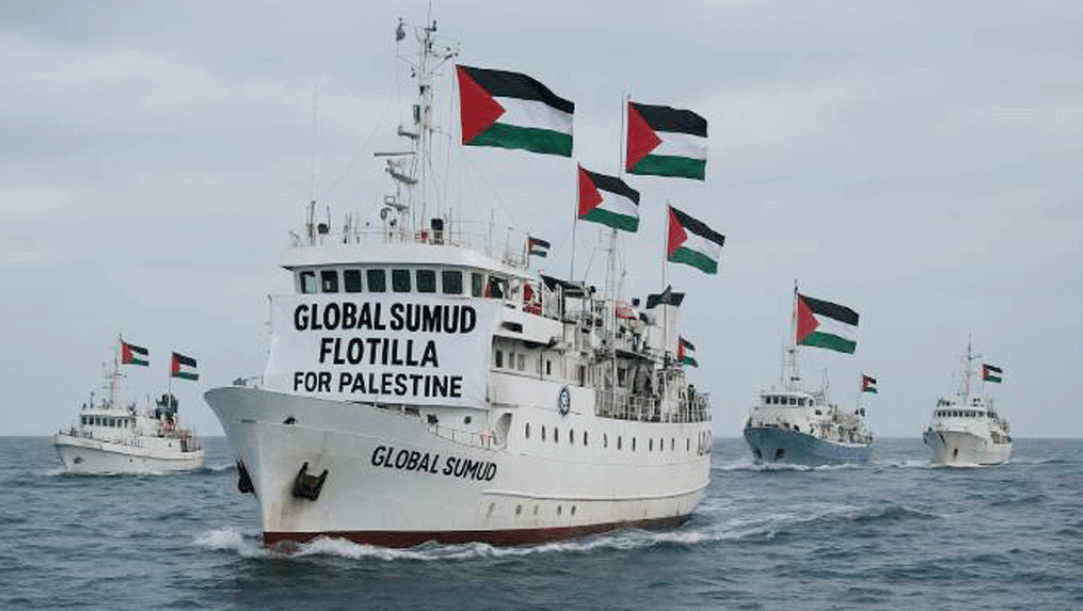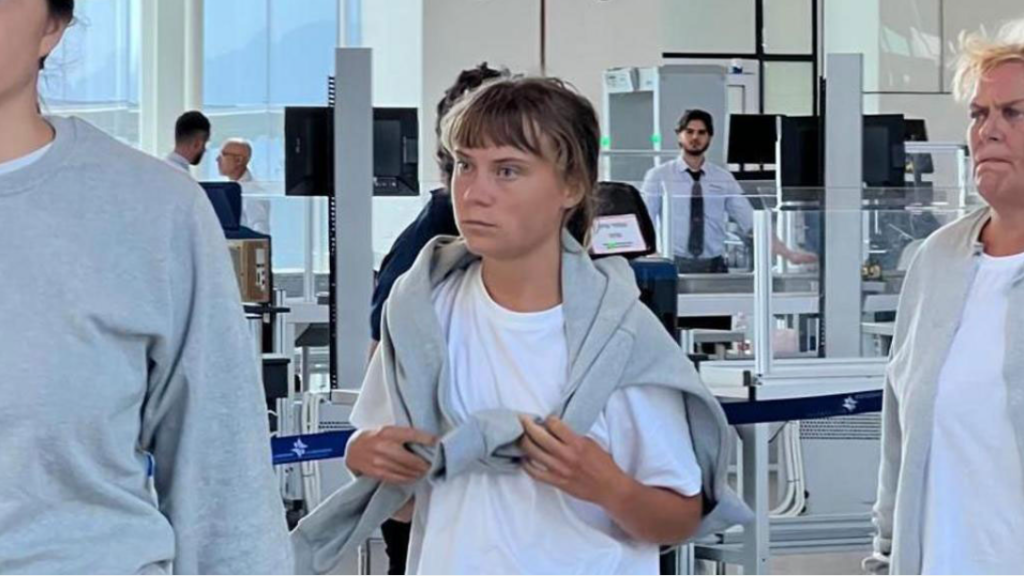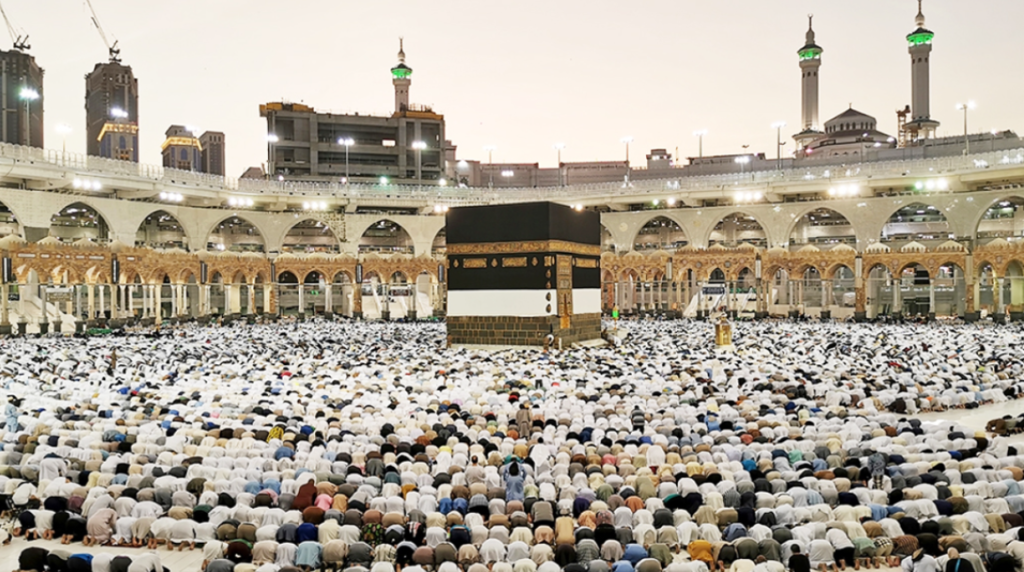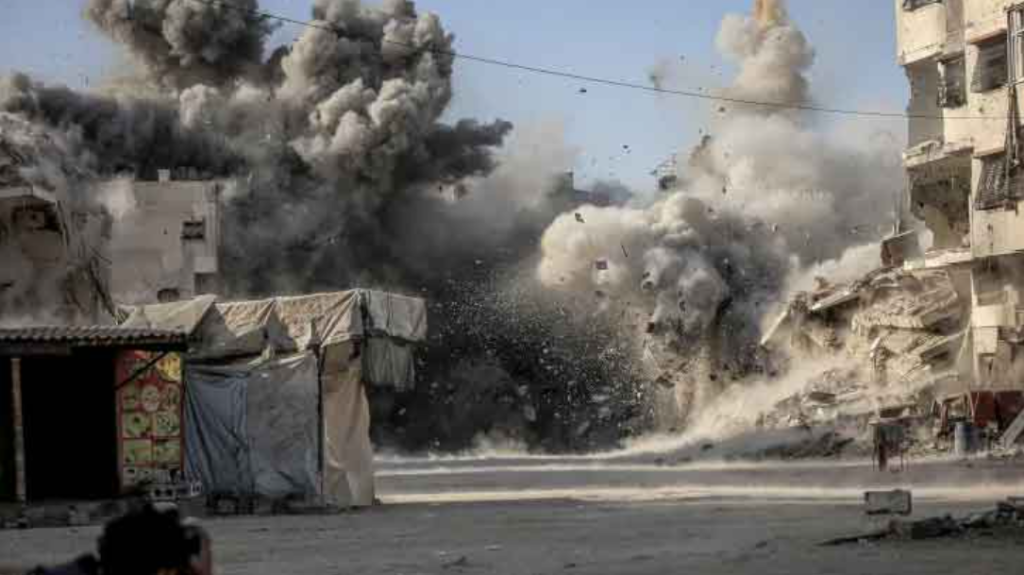Desk Report:
When Israeli forces attacked the Global Relief Flotilla, an international flotilla carrying food and medicine to Gaza, two web developers in Glasgow, Scotland, scrambled to track the flotilla’s movements on Wednesday night. Millions of people around the world were watching the fate of the boats online.
Blurry footage from cameras inside the boats was being shown live on the flotilla’s website. The developers were updating the ships’ positions and posting short videos of each ship being seized. They said the number of clicks on the posts was unprecedented. The site recorded 2.5 million visits on Wednesday and 3.5 million on Thursday.
“I’ve never seen numbers like that before,” Lizzie Malcolm, co-director of Rectangle, a design and software company, told Reuters. At least not on a website I created.’
New flotilla campaign
The Global Peace Flotilla was trying to break the Israeli naval blockade, which has reduced Gaza to rubble after two years of Israeli aggression, according to a Reuters report.
The flotilla included more than 40 civilian ships, including about 500 members of parliament, lawyers, and activists. Among them was Swedish activist Greta Thunberg.
The flotilla failed to reach Gaza. The ships were intercepted and taken to Israel. But within 10 days, it had become the most talked-about resistance movement against the Israeli blockade. Encouraged by that campaign, another flotilla of 11 ships has already set sail.
Through a well-organized social media campaign, updated ship-tracking technology, smart website design and grassroots organizing, the mission has garnered widespread attention and support, fueling a global movement to lift the blockade.
Israel claims its naval blockade is legitimate as part of its fight against Hamas in Gaza. It calls the flotilla “provocative.”
But the flotilla has already garnered widespread sympathy around the world. After Wednesday’s seizure, protests against Israel spread across Europe, as well as in Argentina, Mexico and Pakistan. Leaders from Colombia to Malaysia have criticized Israel.
Birth of a Movement
Israel imposed a blockade on Gaza in 2007 after Hamas took control. But since the October 2023 war, the anti-blockade awareness movement has gained new momentum.
This latest campaign has drawn more attention than ever before.
According to Dan Mercia, a professor at St George’s, University of London, the flotilla has also benefited from the political changes that have begun since June.
He said that countries such as France and the UK have recognised Palestine as a state, in response to the Israeli attack. The cultural impact is now visible and the flotilla’s role is important there.
Earlier, an organisation called ‘March to Gaza’ had organised a journey to the Rafah border, but it failed when the Egyptian authorities expelled the workers. Several other smaller flotillas tried to break the blockade, but they did not come to much discussion.
Last June, various organisations met in Tunisia and decided to take a larger joint initiative.
In this regard, Greek representative Antonis Faras said, ‘The idea was that something bigger needed to be done. Communication and exchange of experiences were also discussed at the meeting.’
A huge support from the start
This is how the Global Sumud Flotilla was born, whose aim is clear – to break the Israeli blockade.
The organization received overwhelming support from the start. Greek representative Antonis Faras said that when they invited people to participate in the initiative, they received about 20,000 applications.
In Italy, a charity called Music for Peace began collecting donations with a goal of 40 tons of aid. In just five days, they collected more than 500 tons of donations.
Thus began a massive preparation across Europe. A Greek team gathered 25 boats from different parts of Europe. The call for donations was met with a huge response.
Meanwhile, local organizers in Italy developed close ties with labor unions. Those unions took various actions, including strikes, in various port areas in solidarity with the Sumud flotilla.
The results came last Wednesday. As news of the Israeli operation spread, thousands of people took to the streets of Italy. Labor unions called for a general strike on October 3.
The movement was divided into country-based sections, each with its own spokesperson.
Maria Elena Delia, a spokeswoman for the Italian delegation, said that each region had its own organization—this structure was the key to success.
Live broadcast to the world
The Global Somud Flotilla regularly updates its activities on Facebook, Telegram and Instagram, and holds press conferences with human rights activists on board via Zoom.
Nelson Mandela’s grandson, Nkosi Zweliwelile Mandela, was also on board. Thunberg was interviewed from the ship’s deck.
The ships were live-streamed; they were also equipped with sophisticated tracking devices. Based in Glasgow, Malcolm and his colleague Daniel Powers, working with a London-based research group called Forensic Architecture, also arranged for Garmin devices and mobile phones to be used as backup for tracking.
On Wednesday night, live cameras showed Israeli soldiers ordering the captains of the ships to shut down their engines and boarding the ships with guns and night-vision goggles.
As per safety protocol, the activists were wearing life jackets
The crew sat with their hands raised.
Malcolm and Powers had been watching the images and updating the ships’ positions throughout the night from their studio in Glasgow.
“We’ve seen the interest from people. They want to see. There’s something positive about it, like everyone is trying to help the human rights activists get to their destination,” Malcolm said.




